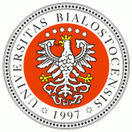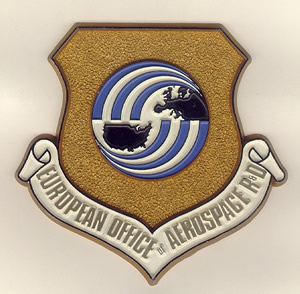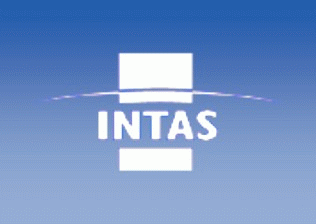Sponsors:



 |
|
Organized by
the Institute of Experimental Physics, University of Bialystok
Dieter Michel, Germany
1) Introduction to NMR spectroscopy and NMR imaging (45 min)
2) NMR spectroscopy in one and two dimensions for the study of disordered and ordered solids (2x45 min).
3) NMR and EPR on nanostructured materials (45 min).
Prof. Dr. Dieter Michel
University of Leipzig, Germany
-
Introduction to NMR spectroscopy and NMR imaging.
The aim of this contribution is to deliver an introduction which is not only addressed to specialists in this field. It is intended to stimulate scientists to become more familiar with Nuclear Magnetic Resonance (NMR) spectroscopy, nuclear spin relaxation, NMR imaging or tomography and with other applications of NMR. NMR is based on the nuclear Zeeman effect. The resonance frequency is given by the Larmor frequency. It describes, in a simplifying classical approach, the precession of the nuclear dipole moments around the axis of an external d. c. magnetic field. The magnetic dipole moments are proportional to the nuclear spins, i.e. the nuclear angular moments. The advantage of these methods is that the measurements may be carried in a wide frequency range. For spectroscopic measurements normally very homogeneous fields are necessary. The respective magnetic flux density may be varied between ca. 0.5 Gauss or 5.10-5 Tesla (the earth“s magnetic field) and about 20 Tesla (pumped superconducting magnets at a He temperature of 2 K). The resonance frequencies are between about 2 kHz and 900 MHz for protons. Recently strong pulsed magnetic fields up to 70 Tesla have been produced. It has been shown that NMR measurements may be also realized in these strong pulsed magnetic fields when the requirements to the homogeneities of the d. c. magnetic fields are not so high. The shortcomings of NMR are related with its poor sensitivity. Therefore, the minimum number of spins in the active range of an NMR coil should be higher than about 1017. In spite of this poor sensitivity NMR has found a rather broad application to many fields of science, including physics, chemistry, biology, geosciences and, in particular, medicine. In this context it is also interesting to mention the fundamental contributions which are related with various Nobel prizes. In the lecture we will explain some basic principles, along the line which has been mentioned: nuclear Zeeman effect, Larmor frequency, quantitation of nuclear moments, measurements of macroscopic spin magnetization, Bloch“s equations, transverse and longitudinal relaxation, principal scheme of NMR measurements, Fourier transform, principles of NMR spectroscopy in comparison with NMR tomography. An important question is the progress in the magnet technology. After this introduction to the spin dynamics, we shall explain various applications: high resolution NMR in general, high resolution by means of Magic Angle Sample Spinning (MAS), medical applications of high-resolution NMR, introduction to 2D NMR spectroscopy, determination of the 3D structure of macromolecular systems, principles and progress in NMR imaging. The introduction will be presented with many sketches. The initial comparably low scientific level will be improved step by step.
- NMR spectroscopy in one and two dimensions for the study of disordered and ordered solids.
The two parts of this lectures will be organized as follows: Based on the first lecture, the presentation in the first part will start with a more systematic description of basic principles of NMR (advantage and shortcomings of Bloch“s equations, density matrix description). Then we will describe some fundamentals of high resolution NMR in powdered solid materials (averaging in the spin space by multi-pulse techniques for abundant nuclei, averaging by means of fast sample spinning, MAS). Cross-polarisation techniques for NMR measurements on rare spins in solids will be explained. An introduction to two-dimensional (2D) NMR will be given and explained in more detail in case of NMR-exchange spectroscopy. It will be shown how multi-quantum MAS NMR on nuclei with half-integer spin quantum number works. The conditions for the measurements will be explained and examples for the application will be given.
In the second part, three examples will be discussed in more details where NMR is applied to solids. This includes also parts of our own work:
A. Proton order and disorder in squaric acid
B. NMR study of the critical dynamics at the N-IC phase transition in incommensurately (IC) modulated crystals
C. Domain structure and mechanism of phase transitions in Tetramethyl Ammonium Cadmium Chlorid (TMCC) single crystals
D. Proton conductivity in solids
- NMR and EPR on nanostructured materials.
Examples of our recent research work on nano-structered materials. But this will not be a lecture for NMR specialists only, but rather then the description of conceptions, aims, scopes, material properties and conclusions.
Studies of size effects on ferroelectric properties of oxide perovskites have obtained a great impetus in recent years. Curie temperature, electrical polarization, coercive field, switching time and other properties potentially depend on the particle size. It will be shown that the EPR and NMR methods sensitively probe changes of the structure and the local symmetry in the nanocrystalline material.
To introduce into aim and scope, we briefly explain the application of multi-frequency EPR to BaTiO3 doped by Mn2+ ions. Ultrafine powders are prepared from a monomeric metallo-organic precursor through combined-solid state polymerization and pyrolysis (CPP). The mean particle diameter dm was varied in the range between 15 nm £ dm £ 250 nm. This particular route enables not only the adjustment of the mean particle size but also the incorporation of the paramagnetic metal ions. The perovskite nanopowders were carefully characterized by various methods (TGA, DSC, FT-Raman, XRD, SEM and EDX). The mean fine structure parameter D and the width DD of the distribution reveal a pronounced size dependence. Critical particle diameters for the disappearance of ferroelectricity are estimated.
The properties of BaTiO3 powders are also investigated by means of NMR spectroscopy. The advantage is that these studies may be performed on natural local probes, e.g. on 137Ba nuclear spins. Central transition (mI = -1/2 <=> mI = +1/2) NMR spectra are measured the line shape of which is dominated by the nuclear quadrupole interaction in second order of the perturbation theory. This has been checked by measurements at various 137Ba Larmor frequencies. It will be shown that the 137Ba quadrupolar coupling constant e2qQ/h in the tetragonal phase allows similar conclusions about the properties of the fine particles as the fine structure parameter D. On this basis a structural model for a nanograin is derived in which a only weakly distorted tetragonal core is surrounded by a highly distorted shell.
Moreover, we study the behavior of BaTiO3 embedded into mesoporous MCM 41 materials. The materials used possess an effective diameter of the hexagonal tubes of ca. 3.7 nm. In contrast to the large dielectric constants (d.c.) measured for the bulk BaTiO3 in the tetragonal phase, the d.c. values of these materials practically do not differ from those ones for empty MCM 41 rods. The behavior shows that the materials do not reveal ferroelectric properties. This conclusion is quite consistent with the critical diameters estimated for fine BaTiO3 powders. An overview about our recent publications work will be given too.
|
|
|